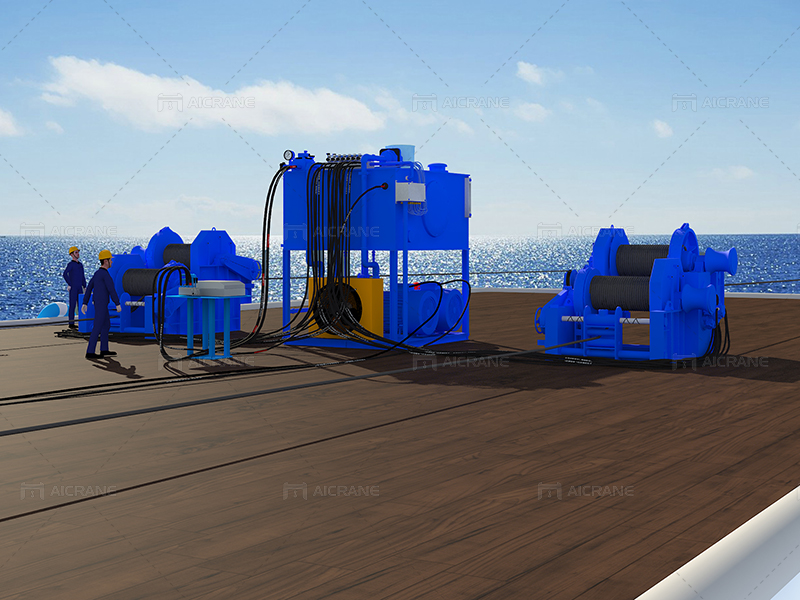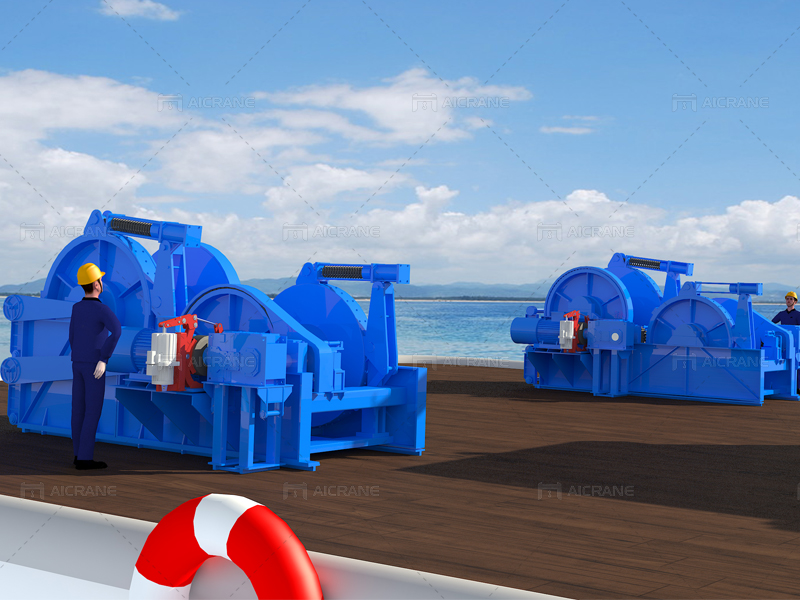Marine winches are integral components of a ship’s equipment, serving various purposes from anchoring and towing to lifting heavy loads. Given the critical nature of these tasks, it is imperative that marine winches comply with rigorous safety certifications and standards. This article delves into the key safety certifications and standards that marine winches must adhere to, ensuring the reliability, performance, and safety of these essential maritime devices.

International Maritime Organization (IMO) Standards
The International Maritime Organization, a specialized agency of the United Nations, establishes global standards for the safety, security, and environmental performance of international shipping. Relevant IMO conventions and codes that pertain to marine winches include:
SOLAS (Safety of Life at Sea): SOLAS is the most fundamental treaty addressing the safety of merchant ships. It sets out minimum safety standards for the construction, equipment, and operation of ships. Marine winches must comply with SOLAS requirements to ensure the safety of the vessel and its crew.
MARPOL (International Convention for the Prevention of Pollution from Ships): MARPOL addresses the prevention of pollution of the marine environment by ships. Winches that involve hydraulic systems, for example, must comply with MARPOL Annex I, which regulates oil pollution.
International Electrotechnical Commission (IEC) Standards
For electrically powered winches, adherence to IEC standards is essential. The IEC is a global organization that publishes international standards for electrical, electronic, and related technologies. Relevant standards for electric winches may include:
IEC 60092 – Electrical Installations in Ships: This series of standards covers various aspects of electrical installations on ships, ensuring safety and reliability. Electric winches on ships must comply with the relevant sections of IEC 60092 to meet electrical safety standards.

American Bureau of Shipping (ABS)
ABS is a classification society, with a mission to promote the security of life, property, and the natural environment. Vessels seeking ABS classification must adhere to ABS rules and standards. Winches on ABS-classed vessels need to meet the society’s requirements for design, construction, and maintenance.
ISO Standards: The International Organization for Standardization (ISO) develops and publishes international standards that ensure the quality, safety, and efficiency of products, services, and systems. Relevant ISO standards for marine winches may include:
ISO 3730 – Shipbuilding and marine structures — Deck machinery — Vocabulary: This standard provides a comprehensive vocabulary related to deck machinery, including winches, ensuring clarity and consistency in the terminology used in the maritime industry.
ISO 7825 – Shipbuilding and marine structures — Deck machinery — Chain stoppers for ships’ anchor chains: For ship winches involved in anchoring operations, ISO 7825 sets standards for chain stoppers, contributing to the overall safety and reliability of anchoring systems.
DNV Rules for Classification of Ships
Det Norske Veritas Germanischer Lloyd (DNV GL) is a classification society that provides services for ships and offshore structures. Vessels seeking DNV classification must adhere to DNV rules. DNV’s standards cover various aspects of ship design, construction, and equipment, including winches.
Lloyd’s Register Standards
Lloyd’s Register is another prominent classification society with rules and standards for the design, construction, and operational maintenance of ships and offshore structures. Winches on vessels seeking Lloyd’s Register classification must meet the society’s standards.
Occupational Safety and Health Administration (OSHA) Standards
OSHA, a U.S. federal agency, sets and enforces safety and health standards in the workplace. While OSHA regulations primarily apply to onshore workplaces, certain aspects may be relevant to the manufacture, installation, and maintenance of winches used in shipyards or on vessels docked in U.S. ports.
European Union (EU) Directives
For winches used on vessels registered in EU member states, compliance with relevant EU directives is crucial. The Machinery Directive (2006/42/EC), for example, sets essential health and safety requirements for machinery, including winches, placed on the EU market.
Conclusion
In the maritime industry, safety is paramount, and adherence to established standards and certifications is non-negotiable. Marine winches, being critical components of a vessel’s equipment, must meet stringent criteria to ensure the safety of the ship, its crew, and the environment. Vessels seeking classification from classification societies such as ABS, DNV GL, and Lloyd’s Register must comply with their rules and standards, which cover various aspects, including winch design, construction, and maintenance.
Furthermore, adherence to international conventions and standards set by organizations like the IMO and IEC ensures a global approach to maritime safety. ISO standards contribute to the standardization of terminology and specifications, promoting clarity and consistency in the design and use of winches.
Ultimately, the comprehensive compliance of marine winches with safety certifications and standards is a testament to the commitment of the maritime industry to prioritize safety, mitigate risks, and uphold the highest standards of quality and reliability at sea. As technology evolves and new challenges emerge, ongoing collaboration among industry stakeholders and continued adherence to safety standards will remain critical for the advancement of maritime safety.